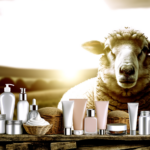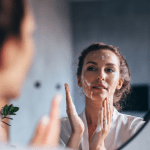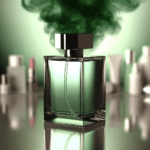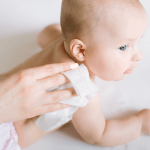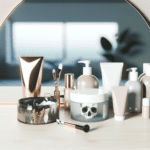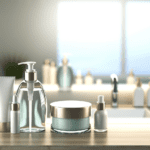Introduction to Triclosan and Its Prevalence in Skincare
What is Triclosan?
Triclosan (TCS) is an antimicrobial agent that has been widely used in consumer goods, including skincare products, since the 1970s. Its broad-spectrum antibacterial and antifungal properties made it a popular ingredient in a variety of personal care items such as soaps, deodorants, toothpastes, and cosmetics. Triclosan is known for its ability to reduce or prevent bacterial contamination, which can lead to skin infections and other health issues.
Historical Use in Consumer Products
The use of triclosan dates back to the 1960s when it was first developed for medical sanitation in hospitals. Its incorporation into consumer products began in the 1970s, and by the late 1990s, triclosan’s production had increased significantly, reflecting its widespread use. It was estimated that between 1999 and 2000, a large percentage of liquid and bar soaps available in the market contained triclosan, highlighting its prevalence in everyday products.
Current Presence in Skincare Industry
Despite growing concerns over its safety and effectiveness, triclosan continues to be found in the skincare industry, albeit at reduced levels due to regulatory actions and increased consumer awareness. While the FDA has banned triclosan in certain products like over-the-counter hand soaps, it remains in other personal care items, including some toothpastes and cosmetics, where it is used for its supposed benefits against harmful bacteria.
Initial Appeal of Triclosan
The initial appeal of triclosan in skincare products was largely due to its antimicrobial properties, which were thought to provide additional protection against germs compared to regular soap and water. This was particularly attractive in a market where consumers were becoming increasingly health-conscious. Moreover, triclosan was believed to be safe for human use, as early studies suggested that it was not significantly absorbed through the skin. However, subsequent research has challenged this assumption, revealing potential risks associated with triclosan exposure.

Popular Read: Endocrine Disruptors in Skincare: What You Need to Know
The Health Risks of Triclosan
Endocrine Disruption and Hormonal Imbalance
Triclosan is an endocrine-disrupting chemical, meaning it can interfere with the body’s hormonal systems. Studies have shown that exposure to high amounts of triclosan may lead to a decrease in thyroid hormones, which are crucial for regulating metabolism, growth, and development. The endocrine system’s delicate balance can be disrupted by triclosan, potentially leading to developmental, reproductive, and neurological issues, among others.
Links to Breast Cancer
Research has raised concerns about the potential link between triclosan and breast cancer. While some studies suggest that long-term exposure to triclosan may increase the risk of certain cancers, others have proposed its use as a treatment for specific cancer types. However, the evidence is not conclusive, and more research is needed to fully understand triclosan’s role in cancer development or treatment.
Impact on Immune System
Triclosan may also affect the immune system. Studies have indicated that it could alter the immune response, potentially leading to increased susceptibility to allergies and other immune system-related diseases. The chemical’s immunomodulatory effects are particularly concerning for children and individuals with compromised immune systems.
Contribution to Antibiotic Resistance
One of the most pressing concerns with triclosan use is its contribution to antibiotic resistance. The widespread use of triclosan in consumer products may promote the development of bacteria that are resistant to antibiotics, posing a significant threat to public health. This resistance can lead to difficulties in treating common infections and may result in more severe illnesses.
Other Potential Health Concerns
Beyond the specific health risks already mentioned, triclosan exposure has been associated with a range of other potential health concerns. These include developmental and reproductive toxicity, chronic toxicity, and carcinogenicity. Additionally, triclosan’s presence in human tissues and fluids, such as breast milk, raises concerns about its effects on vulnerable populations, including infants and pregnant women.
In conclusion, the potential health risks associated with triclosan underscore the importance of re-evaluating its use in consumer products. Regulatory agencies and consumers alike must consider the implications of triclosan exposure and take appropriate measures to mitigate its risks.

Do you have the most commonly used but toxic, disease bringing chemicals in your skin care? Many chemicals in skincare are hormone disruptors and make menopause symptoms worse.
Find out more…
Environmental Impact of Triclosan
Persistence in the Environment
Triclosan, a common antimicrobial agent found in numerous skincare and consumer products, has raised environmental concerns due to its persistence in the environment. Once released into waterways, triclosan is resistant to degradation, leading to its accumulation in sediments and natural waters. Studies have shown that triclosan can persist for extended periods, with its half-life in aquatic environments ranging from weeks to months, depending on conditions such as temperature, pH, and exposure to sunlight. The compound’s stability is particularly concerning because it allows for continued exposure of aquatic organisms to triclosan, potentially leading to adverse effects over time.
Effects on Aquatic Life
The presence of triclosan in aquatic environments poses significant risks to marine and freshwater species. Research indicates that triclosan can disrupt the normal function of algae, a foundational component of aquatic food webs. It has been observed to inhibit photosynthesis and cause oxidative stress in these organisms, which can lead to reduced growth and reproduction rates. Invertebrates, such as certain species of amphibians and fish, are also affected by triclosan exposure. Sub-lethal concentrations can alter hormone regulation, leading to developmental and reproductive issues. Moreover, triclosan’s impact on microbial communities can disrupt the natural balance of ecosystems, as it may selectively target susceptible bacterial species while allowing resistant strains to proliferate.
Bioaccumulation and Food Chain Implications
Triclosan’s ability to bioaccumulate is another environmental concern. The compound has a high affinity for fatty tissues, which allows it to concentrate within organisms over time. This bioaccumulation can lead to higher levels of triclosan in top predators, posing health risks to wildlife and potentially to humans through the consumption of contaminated fish and other aquatic animals. The biomagnification of triclosan through the food chain can result in concentrations that are several orders of magnitude higher than those found in the environment, raising questions about the long-term implications for species survival and biodiversity.
In conclusion, the environmental impact of triclosan is multifaceted, involving its persistence in the environment, detrimental effects on aquatic life, and potential for bioaccumulation and biomagnification. These factors underscore the need for regulatory measures and the development of safer alternatives to mitigate the ecological risks associated with triclosan use in skincare and other consumer products.
Regulatory Actions and Consumer Response
FDA Ban on Triclosan in Certain Products
In 2016, the U.S. Food and Drug Administration (FDA) took a significant step in regulating triclosan by issuing a final rule that banned over-the-counter consumer antiseptic wash products containing triclosan. This decision was based on a lack of evidence that these products were more effective than plain soap and water in preventing illness and the spread of infections. Additionally, manufacturers failed to prove the long-term safety of triclosan, which raised concerns about its potential health risks, such as bacterial resistance and hormonal effects. The ban targeted a substantial portion of the soap market, signaling a shift in regulatory stance towards a more cautious approach to antimicrobial agents.
Global Regulations and Restrictions
Regulatory scrutiny of triclosan is not limited to the United States. Globally, various countries and regions have implemented restrictions on the use of triclosan in consumer products. The European Union, for instance, has stringent regulations in place, allowing triclosan at a maximum concentration of 0.3% in certain personal care products. These measures reflect a growing international consensus on the need to limit exposure to triclosan due to environmental and health concerns. Regulatory agencies worldwide continue to evaluate the safety and environmental impact of triclosan, leading to ongoing policy adjustments and updates.
Consumer Awareness and Demand for Safer Products
As regulatory bodies have increased their scrutiny of triclosan, consumer awareness has also risen. The public is becoming more informed about the potential risks associated with triclosan and other similar antimicrobial agents. This heightened awareness has led to a shift in consumer demand towards safer, non-toxic alternatives in skincare and personal care products. Companies have responded by reformulating products and phasing out the use of triclosan and triclocarban, often highlighting the absence of these ingredients as a selling point. The market has seen a surge in products boasting natural and organic ingredients, reflecting a broader trend towards health-conscious consumerism and a preference for transparency in product labeling.
Overall, the combination of regulatory action and consumer response has created a powerful force driving the skincare and personal care industries away from triclosan and towards safer, more sustainable practices. As consumers continue to prioritize health and environmental impact in their purchasing decisions, it is likely that the industry will see further innovation in the development of effective and eco-friendly alternatives to triclosan.
Alternatives to Triclosan in Skincare
Natural and Organic Ingredients
With the growing concern over the use of triclosan in skincare products, consumers are turning towards natural and organic ingredients. These ingredients are derived from plants and other natural sources, and they offer antimicrobial properties without the harmful side effects associated with triclosan. For instance, tea tree oil, grapefruit seed extract, and thyme have inherent antibacterial qualities that make them effective alternatives in skincare formulations. Additionally, ingredients like aloe vera and chamomile provide soothing and anti-inflammatory benefits, enhancing the overall health of the skin.
Effective Non-Toxic Preservatives
Preservatives are essential in skincare to prevent the growth of bacteria and extend shelf life, but they don’t have to be harmful. Non-toxic alternatives to triclosan include substances like benzyl alcohol, salicylic acid, sorbic acid, and benzoic acid. These preservatives are effective in small concentrations and are less likely to cause adverse health effects. Moreover, natural preservatives such as rosemary extract, grapefruit seed extract, and citric acid can also help to maintain product integrity without compromising safety.
Holistic Skincare Practices
Embracing holistic skincare practices is another way to avoid triclosan. This approach focuses on the health of the skin as part of the body’s overall well-being. Holistic practices include using gentle, non-toxic cleansers, maintaining a balanced diet, staying hydrated, and getting adequate sleep. These habits support the skin’s natural barrier and reduce the need for harsh antimicrobial agents. Additionally, regular exfoliation with natural scrubs like fine sea salt or sugar can help to keep skin clean and reduce the likelihood of bacterial growth.
How to Identify Triclosan-Free Products
Identifying triclosan-free products requires vigilance in reading labels. Triclosan may be listed under various names, including Microban and Biofresh, or its chemical name, 5-chloro-2-(2,4-dichlorophenoxy)phenol. Consumers should also be wary of labels that tout “antibacterial” properties, as these may indicate the presence of triclosan or its chemical relatives. Instead, look for certifications such as “organic,” “natural,” or “triclosan-free.” Additionally, resources like the Environmental Working Group’s Skin Deep database can help consumers find safer skincare options. By choosing products with transparent ingredient lists and avoiding those with synthetic antimicrobials, consumers can protect their health and the environment.
Do you know the 3 main ways how your body is exposed to harmful chemicals, which affect your hormones, your thyroid, health and beauty?
If not, it may be time to learn about them. It takes about 1-2 minutes.
We have a few suggestions how to avoid these silent health and immune system killers in our new guide.
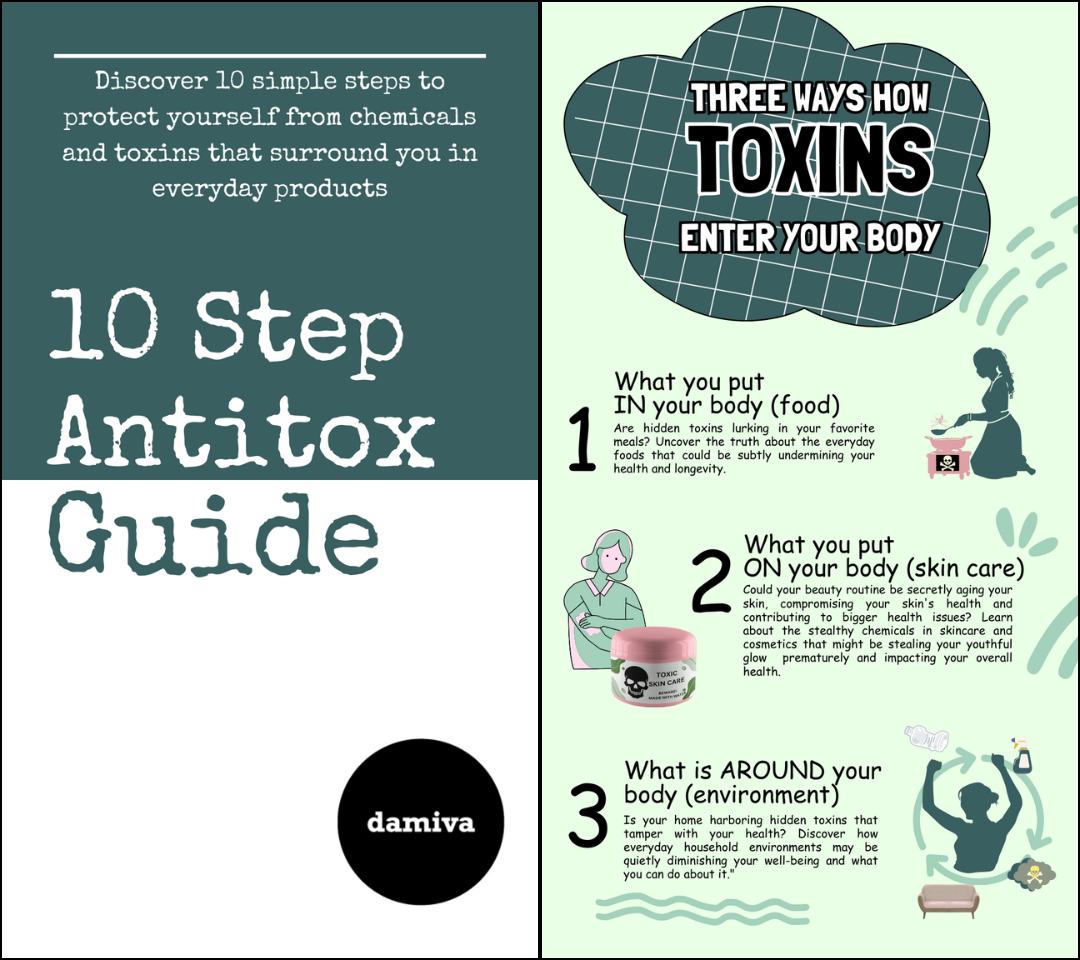
Detoxifying Your Skincare Routine
Assessing Your Current Skincare Products
Embarking on a journey to detoxify your skincare routine begins with a thorough assessment of the products you currently use. Examine each item, from cleansers to moisturizers, and scrutinize the ingredient lists. Look for common culprits such as Triclosan, parabens, phthalates, and sulfates. These substances can be harmful to both your skin and overall health. It’s also wise to be wary of synthetic fragrances and colorants, which can cause irritation and other adverse reactions.
The easiest way, however, is to just check the product for water and make sure it is no ingredient: because water is a breeding ground for bacteria, products with water need preservatives to prevent microbial growth in the product. Without water, there is no need for chemicals. Use water-free skincare!
Steps to Eliminate Triclosan and Other Toxins
- Begin by discarding products that contain Triclosan and other harmful chemicals.
- Transition to safer alternatives by choosing products with natural preservatives and non-toxic ingredients.
- Consider skincare solutions such as Damiva’s patented 100% product linehttps://damiva.com/collections/all using simple, organic ingredients that are gentle and effective.
Importance of Reading Labels and Understanding Ingredients
Understanding the ingredients in your skincare products is crucial for a successful detox. Labels can be misleading, with terms like “natural” and “organic” lacking strict regulation. Focus on the actual ingredients rather than marketing claims. Familiarize yourself with harmful substances and their alternatives. For instance, instead of products with silicones (often ending in “-cone” or “-siloxane”), opt for those with nourishing oils that provide similar benefits without the environmental impact.
Lifestyle Changes to Support Detoxification
Detoxifying your skincare routine isn’t just about the products you apply externally; it’s also about nurturing your skin from within. Incorporate lifestyle changes that support your skin’s natural detoxification processes:
- Stay hydrated to help flush out toxins and maintain skin moisture.
- Eat a balanced diet rich in antioxidants, vitamins, and minerals to promote skin health.
- Engage in regular exercise to boost circulation and encourage the removal of impurities through sweat.
- Ensure you get adequate sleep to allow your skin to repair and rejuvenate overnight.
By taking these steps, you can create a skincare routine that not only enhances your beauty but also contributes to your overall well-being and the health of the environment.
By the way, something for you, a little gift!!!
I am just in the middle of publishing my book. It’s about How women can balance their hormones. One part is about food and diet, of course.
Follow this link and enter your email.
I will send you this part of the book for free once the book is published. It has many concrete, practical tips and recipes and will help you feel better during menopause or times of Big hormonal fluctuations.
Annette, Damiva Lead for Health & Wellness

Conclusion: Embracing a Triclosan-Free Lifestyle
Summarizing the Risks and Alternatives
The journey through the risks associated with triclosan and its widespread use in skincare products has been eye-opening. Triclosan, once hailed for its antibacterial properties, has been linked to a myriad of health concerns, including endocrine disruption, increased breast cancer risk, immune system impact, and its contribution to antibiotic resistance. Equally alarming is its environmental persistence, affecting aquatic life and entering the food chain through bioaccumulation.
Thankfully, the skincare industry is responding to regulatory actions and consumer demand for safer products. Alternatives to triclosan are plentiful, ranging from natural and organic ingredients to effective non-toxic preservatives. By choosing triclosan-free products, consumers can protect their health and contribute to a more sustainable environment.
The Role of Consumers in Shaping Industry Practices
Consumers wield significant power in shaping the practices of the skincare industry. Through informed choices and advocacy, they can drive the demand for safer, more transparent products. The FDA’s ban on triclosan in certain products is a testament to the collective voice of concerned consumers and the impact of public health advocacy. As global regulations tighten and awareness grows, the industry is compelled to innovate and reformulate, prioritizing consumer safety and environmental stewardship.
Final Thoughts on Health, Beauty, and Safety
Health, beauty, and safety are not mutually exclusive. Embracing a triclosan-free lifestyle is a conscious choice that reflects a commitment to personal well-being and ecological responsibility. By diligently reading labels, understanding ingredients, and opting for triclosan-free alternatives, consumers can enjoy the benefits of skincare without compromising their health or the planet’s delicate balance.
As we conclude, let us remember that the true essence of beauty lies in the health and safety of our bodies and the world we inhabit. By choosing triclosan-free products, we not only protect ourselves but also contribute to a larger movement towards a more ethical and sustainable skincare industry. Together, we can foster a future where beauty and safety go hand in hand, and where the products we use reflect our values and our care for the world around us.


